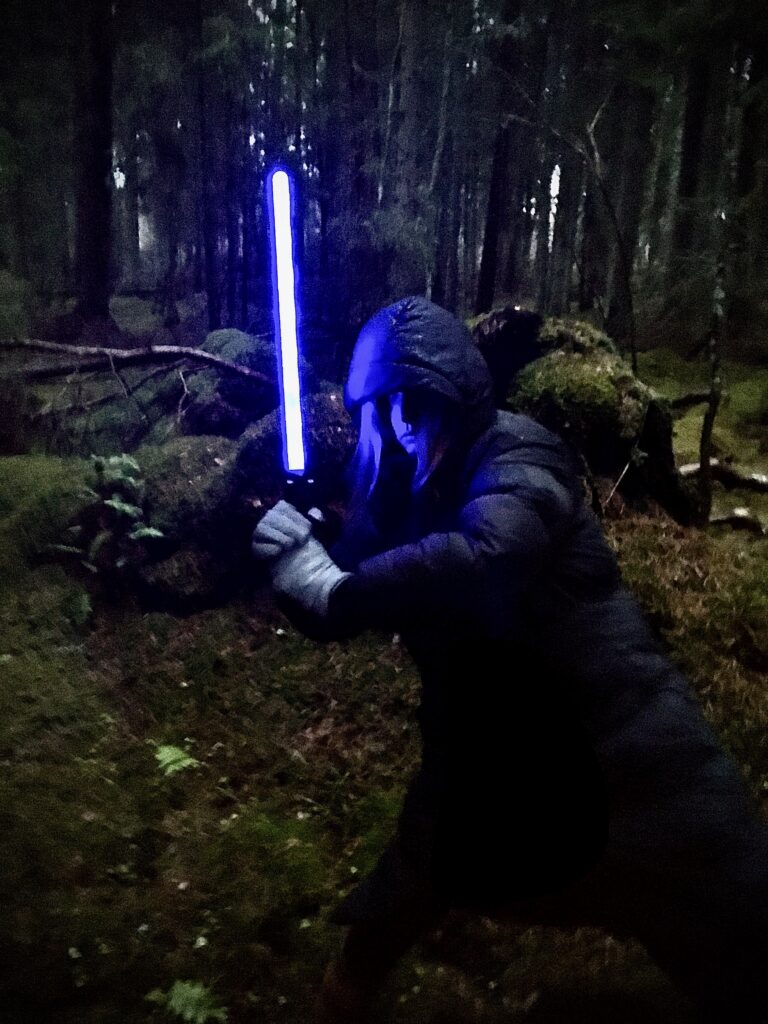
Edith Karlson (1983) is a sculptor who is mostly working with large-scale installations. The figures in Karlson’s work evoke the duality encoded within working as an artist and also being a member of society. Frequently creating animal forms and anthropomorphic figures, she approaches humans as animalistic beings whose impulses, wants, and desires are hidden beneath their morals.
For Karlson, creating animal art is not a goal in itself, and although her sculptures do refer animal form (first appearing at Circus (2009) and Dog Show (2011)) they often address themes of human existence. With the installation Vox Populi (2016), consisting of 100 animal figures and rabbit droppings, Karlson moved from massive large-volume sculptures to demanding small forms and ceramics, looking closer at the laws of nature and the food chain.
The exhibition series Drama Is in Your Head I-III (2012-2013) reflected on people’s (and the artist’s) personal doubts about the world around them. This series can be seen as the artist’s method for dealing with conflict in everyday life, and potential dramatic scenarios. For example, Drama Is in Your Head II (2013) presented a plaster cast army of child-size ghosts, which simultaneously referred to fears from childhood but also to the anxiety of adulthood, emerging after Karlson’s 30th birthday. The exhibition Drama Is in Your Head: Don’t Look Down (2014) consisted of bird sculptures covering the gallery walls and floor (the moulds were taken from dead birds), a video showing the artist trying to free a swallowed bird from the throat of a sparrowhawk, and massive styrofoam blocs. The exhibition can be seen as an attempt to overcome fears relating to death. Related to her previous exhibitions, but a technically exceptional work in Karlson’s oeuvre is Interspace (2015), a hand-plastered room derived from the spatial conditions at the Contemporary Art Museum of Estonia (EKKM) and commissioned for the Köler Prize exhibition.
Animals appear in Karlson’s work again and again, blending with the human environment and also into human figures, creating hybrid creatures – it is not always clear where the human ends and the animal begins. One such example is Can’t See (2023), a sculpture with the head of a fish and the body of a woman, that refers in its title to humans’ inability, or unwillingness, to understand how we pollute the environment. Short Story (2019), combining a seal skeleton and transparent PVC fabric also highlights the relationship between humans and animals, and how dated the idea of the human as the king of nature is.
In Return to Innocence (2021, EKKM), the artist deconstructed mythological narratives and used the fragments to create a pseudo-solemn context. The dramatic narrative exhibition ran through all three floors of the EKKM building, and her sculptures evoked the fast passing of time, the constant presence of death, and the sad poetry of it all.
Edith Karlson exhibited Hora lupi (2024) for the Estonian Pavilion at the 60th International Art Exhibition – La Biennale di Venezia. Presented at the church of Chiesa di Santa Maria delle Penitenti, the exhibition explored primitive human urges in their banality and solemnity and questioned the possibility of redemption in a world that is never worthy of it.
Edith Karlson has studied installation and sculpture at the Estonian Academy of Arts (BA, 2006; MA, 2008). She has been awarded with the Estonian Academy of Arts Young Artist’s Prize (2006), Köler Prize People’s Choice Award (2015), and the Annual Award of the visual and applied arts endowment of the Estonian Cultural Endowment (2019). Karlson is among the recipients of the national artists’ salary between 2018-2020 and 2022-2024, and was granted the Estonian Cultural Endowment’s main award in 2021. Edith Karlson represented Estonia at the 60th Venice Biennale in 2024.